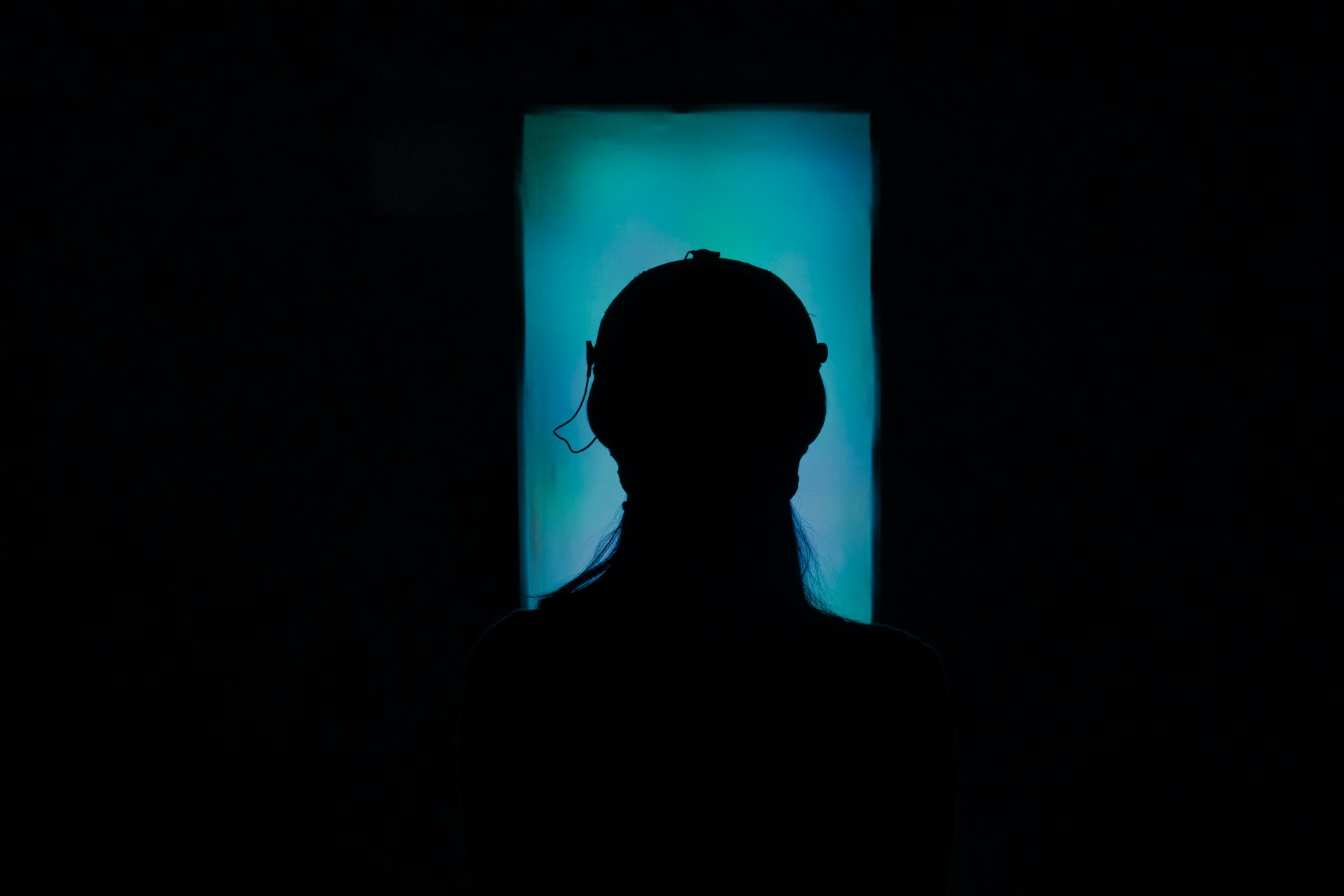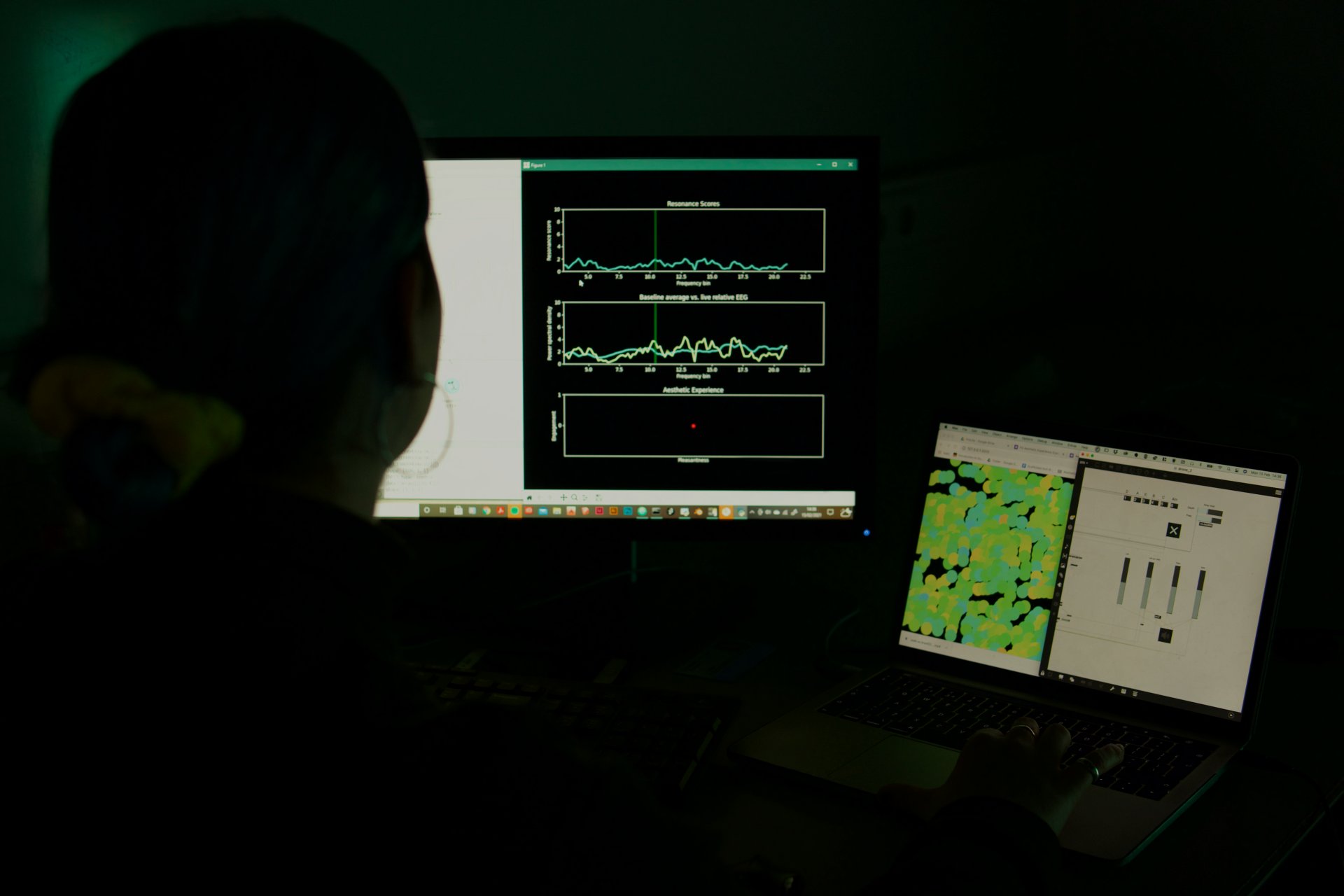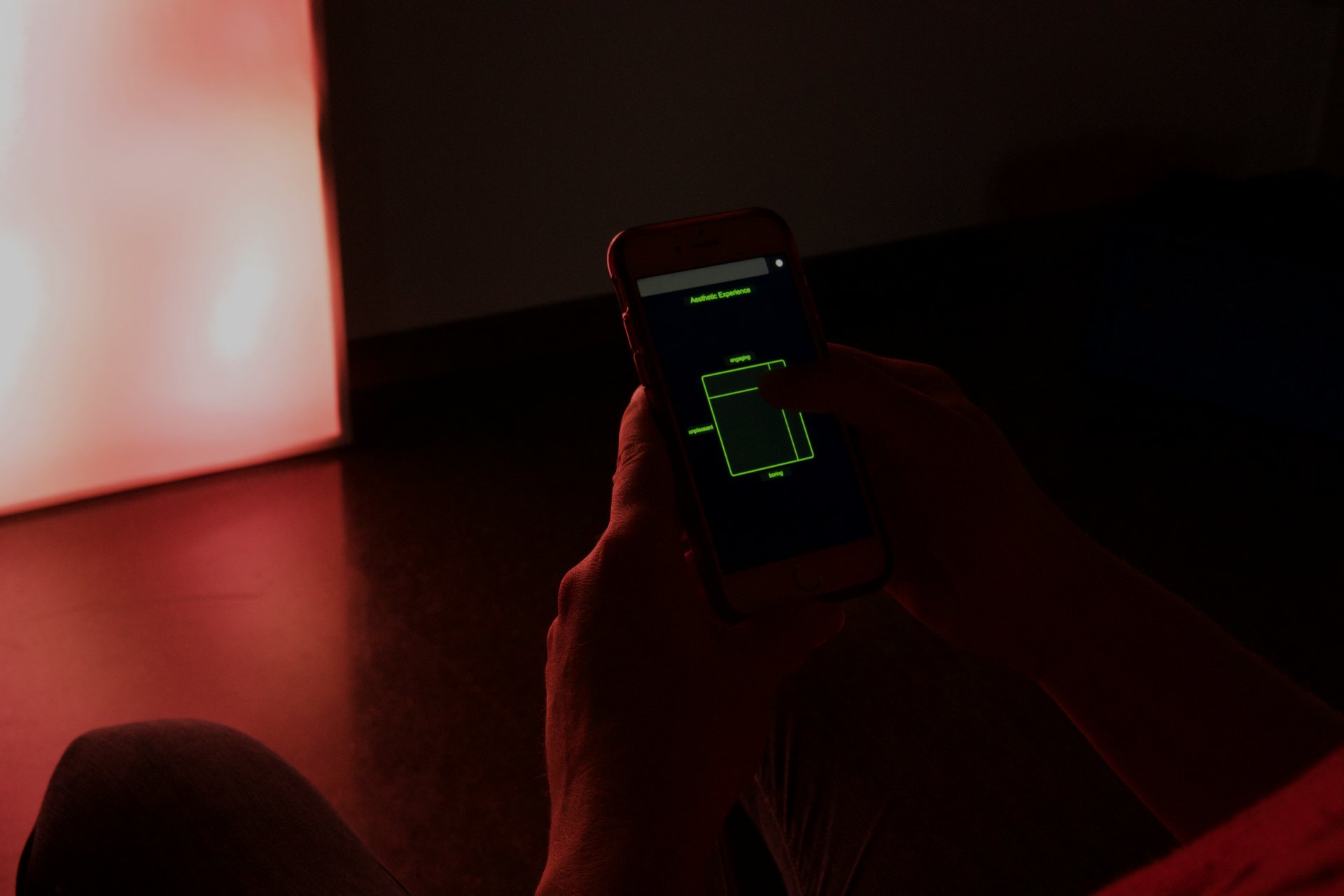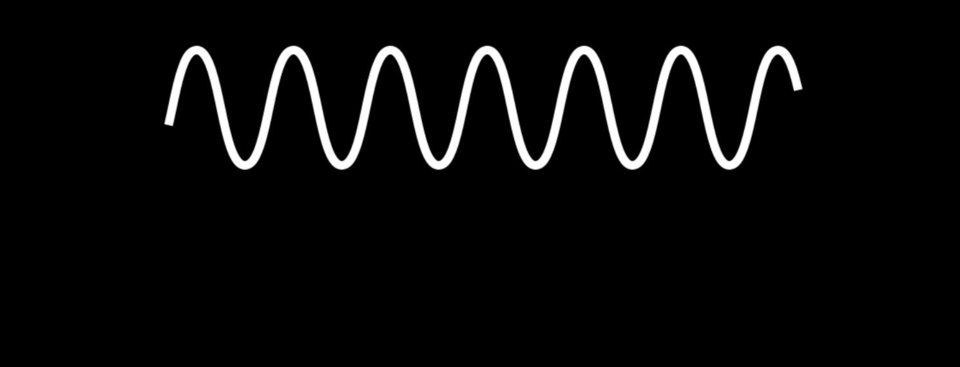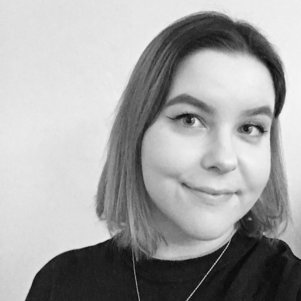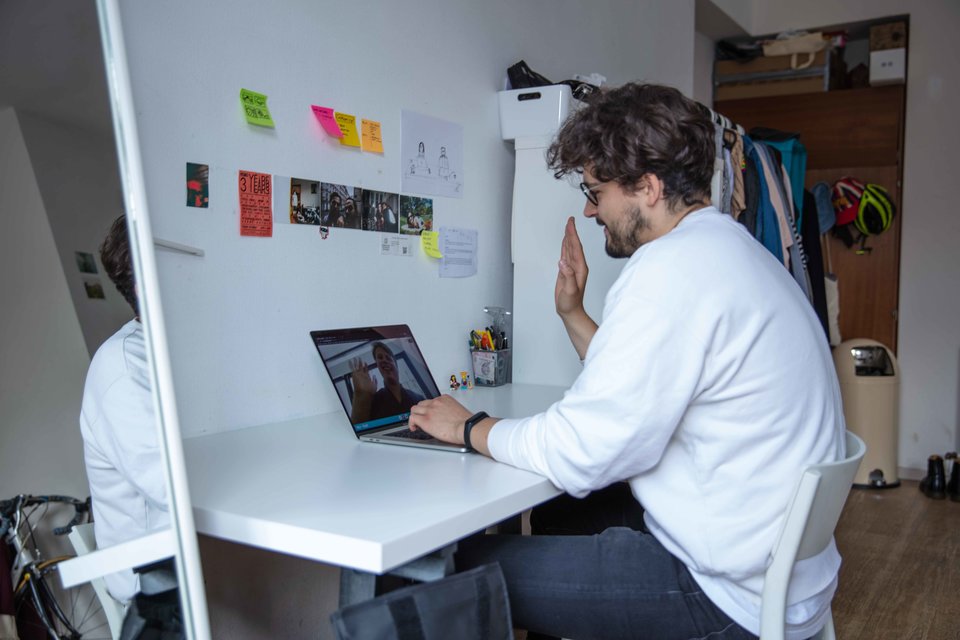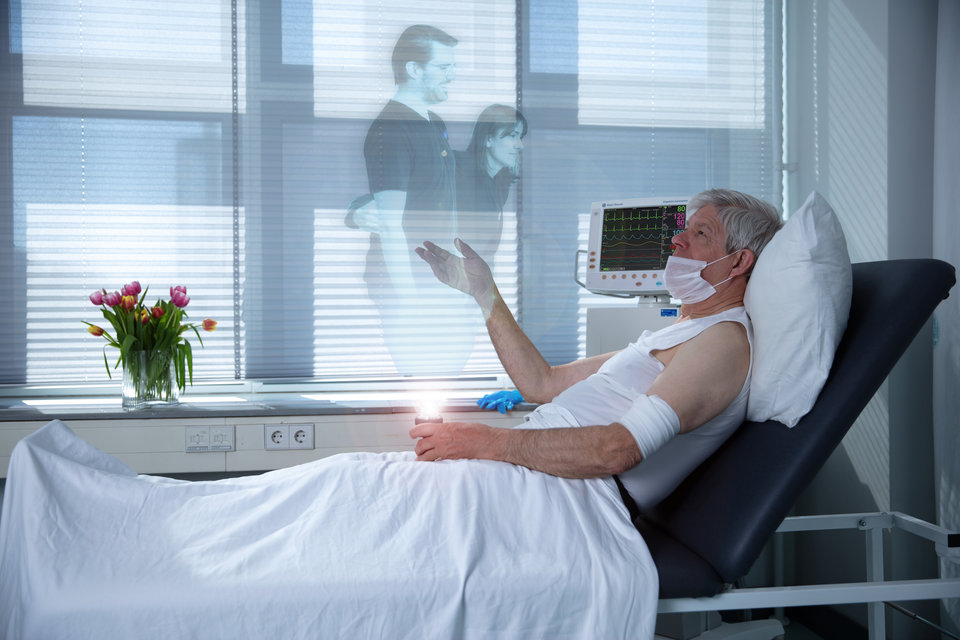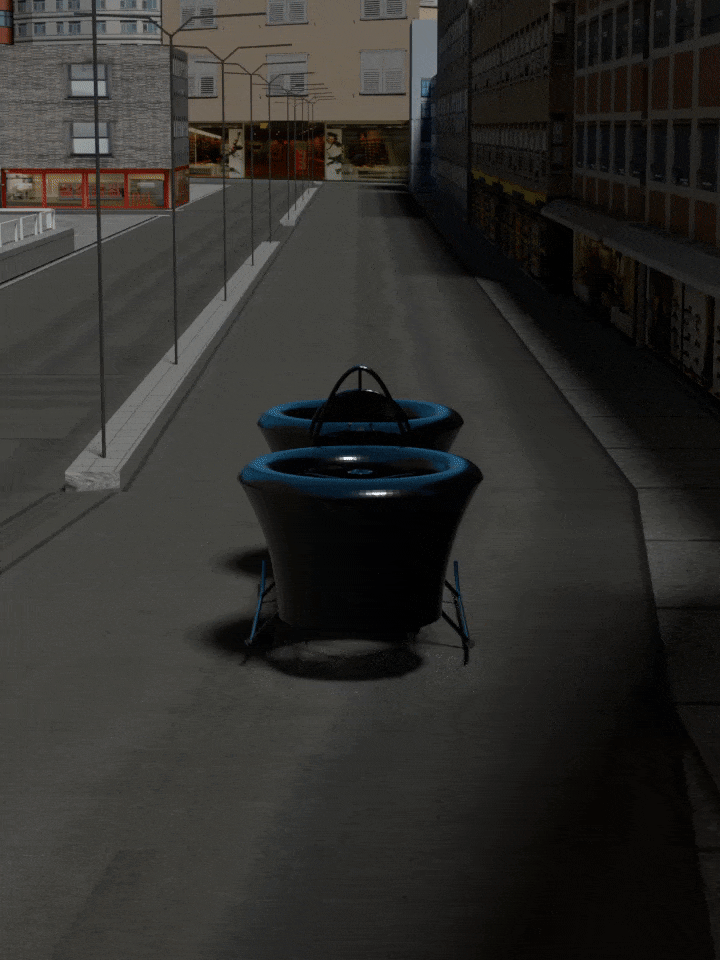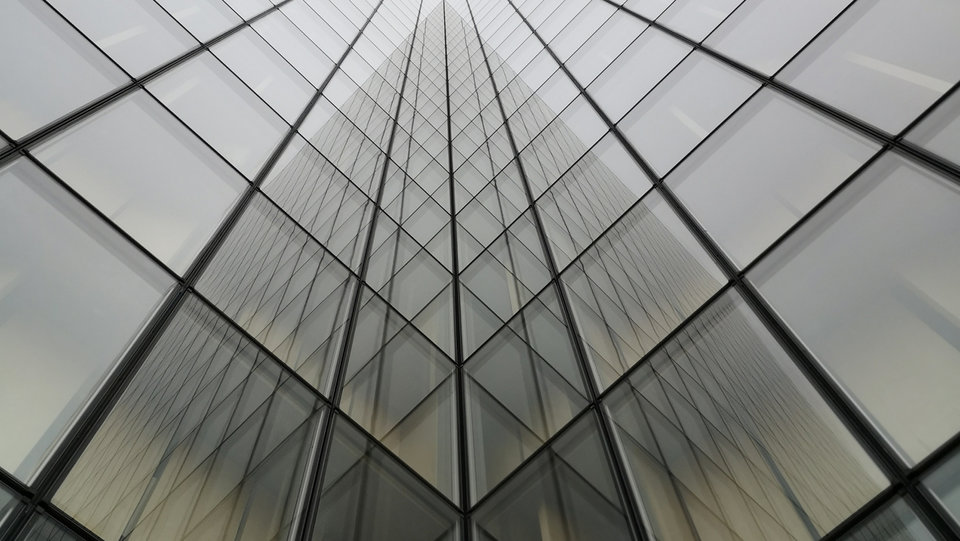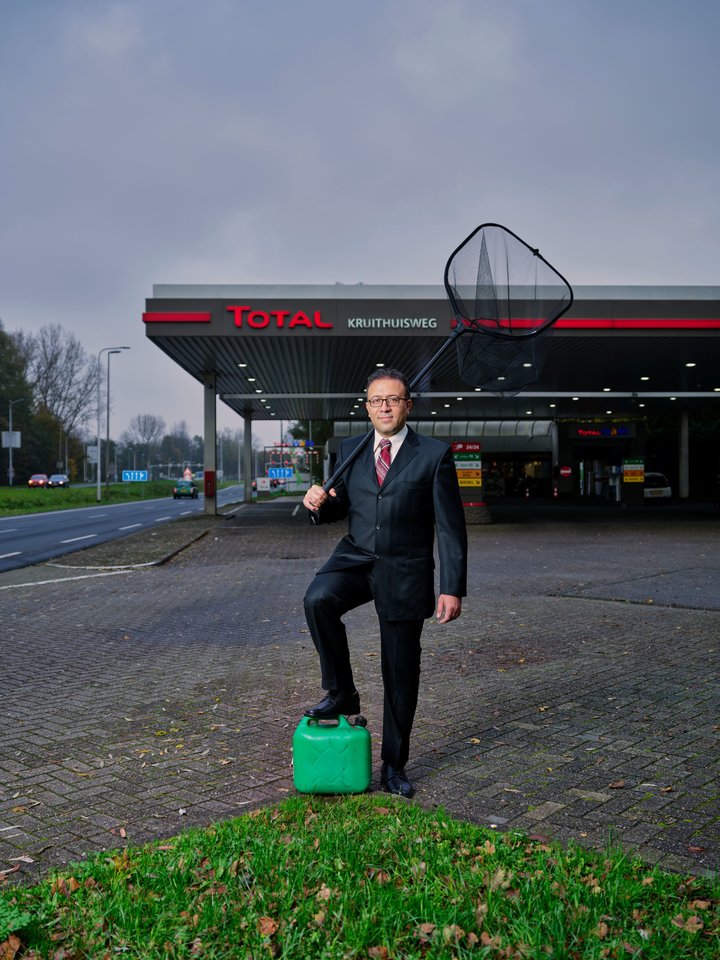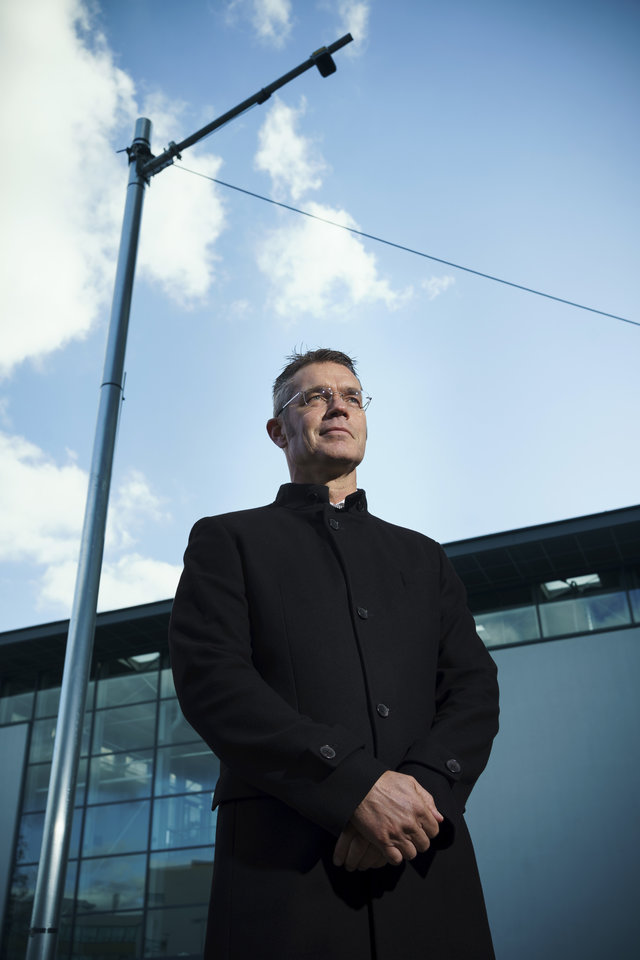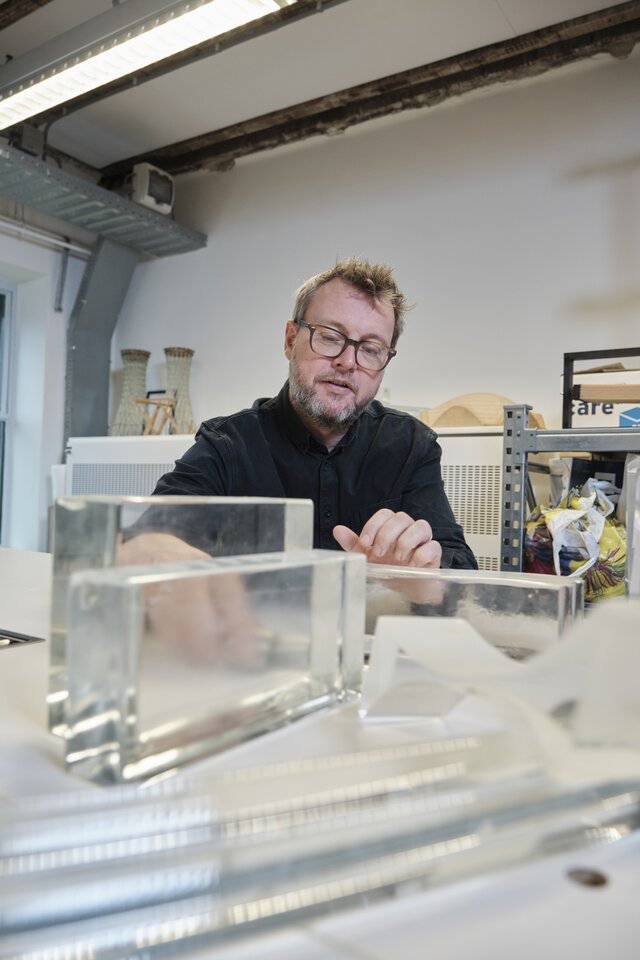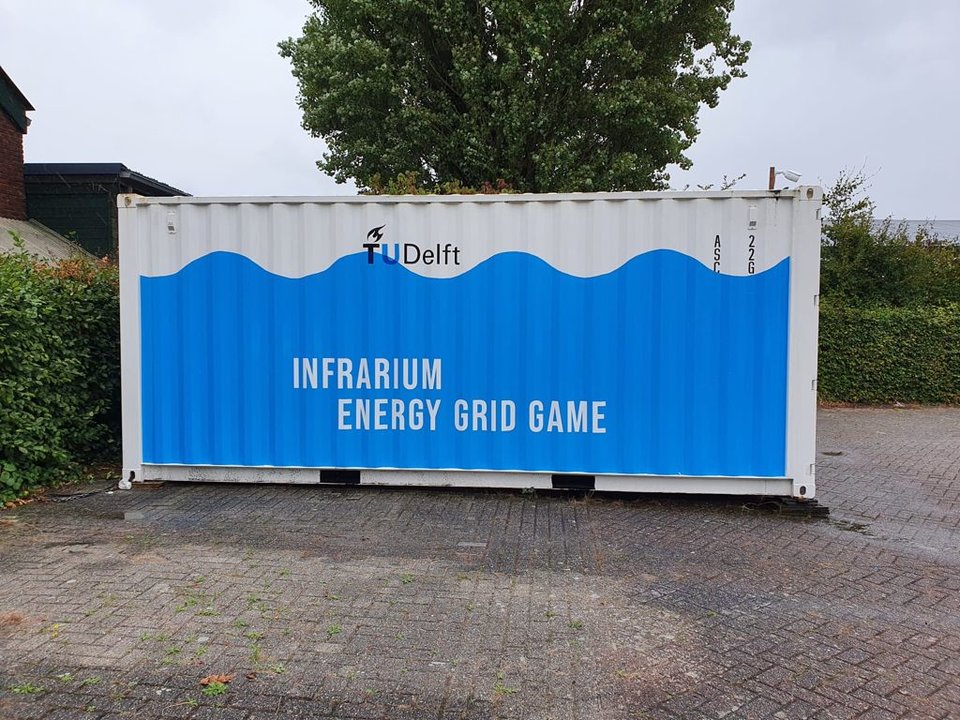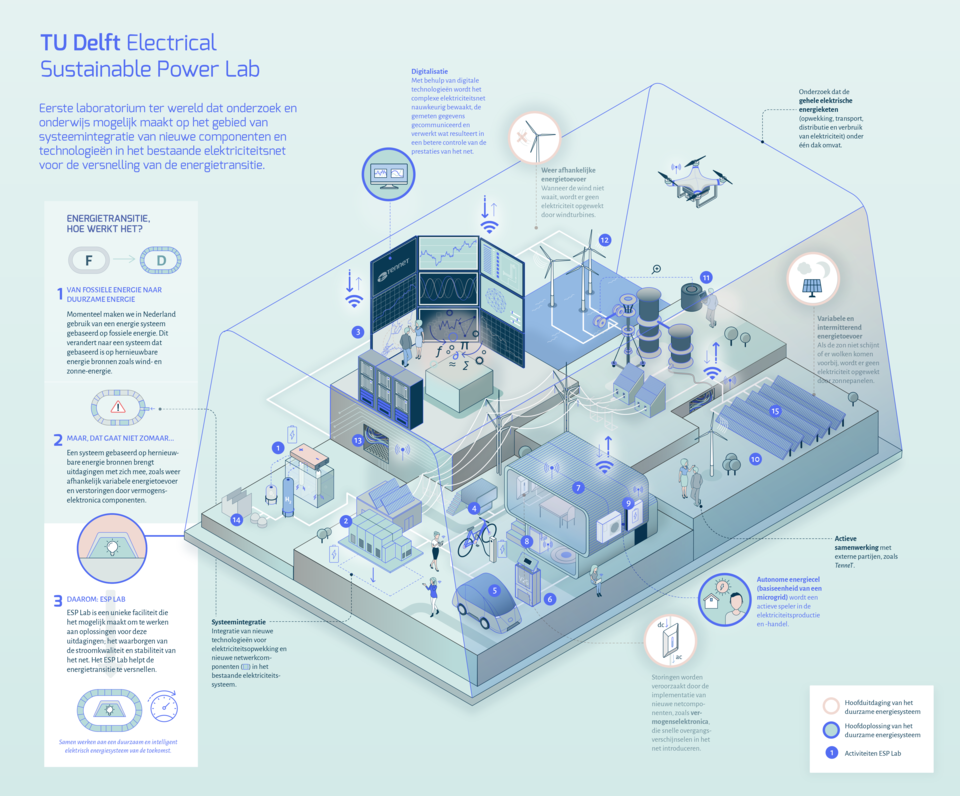A mysterious, alien-like landscape of light and sound fills the small room. The light sparkles as if reflected on rippling waves. Colours swirl into one another. It sounds as Brian Eno-like ambient music, without a recognisable melody or rhythm, a continuum of atmospheres. You feel the sound waves vibrating in your body and imagine yourself immersed in a sea of light.
This is what you experience when you sit on the chair in the middle of this chamber, looking for a resonance between the landscape of light and sound and your own aesthetic experience. On a touch screen, you can indicate on a continuous scale how exciting or boring, and how pleasant or unpleasant, you find the landscapes of light and sound. The designer can take this information into account when adjusting the audiovisual landscape. It is as if you are sitting in the front row of a concert and can help to design the concert yourself.
Via the touch screen, you judge the subjective aesthetic experience in your mind. But on your head you also wear a sort of bathing cap with electrodes that pick up the electrical waves from your brain, from the slowly changing delta waves to the rapidly changing gamma waves. This technique is called electroencephalography, or EEG for short. The measured EEG signals provide an objective record of what is happening in your brain in response to the constantly changing landscape of light and sound.
Can mind and brain resonate simultaneously, so that what you experience coincides with what is measured in the brain? What happens when a peak in the EEG signal coincides with a peak in the subjective aesthetic experience? Can a designer take advantage of this? Does it lead to better designs? These are the questions master’s student Caiseal Beardow investigated for six months in her graduation project NeuroAesthetic Resonance at the Faculty of Industrial Design of TU Delft. The resonance chamber is the audiovisual end product of her work, for which she received a 10/10 from the graduation committee.
Designing through real-time data
Beardow draws three important conclusions from her graduate work. “First, I have shown that real-time data can be a powerful tool in the work of designers”, she says. “Designers can quickly adapt and optimise their concept step by step for an individual.”
Secondly, Beardow hopes that her graduate work will contribute to better theoretical models of aesthetic experiences specifically for designers. “Traditionally, aesthetic experiences are reported in a qualitative way, for example through questionnaires. Often, this is done retrospectively and participants in an experiment have to dig into their memory to find out how they experienced a design. In my project, I developed a technological platform and a metric to measure a person’s aesthetic experience in real time, both subjectively and objectively.”
Third, Beardow has explored the beginnings of a new path for designers. “The data I collect in my installation about aesthetic experiences lend themselves perfectly to analysis with artificial intelligence, and more specifically machine learning. Machine learning learns to recognise patterns in data. Perhaps artificial intelligence sees things that human intelligence does not. I imagine a future where a human designer works with artificial intelligence to co-create a design.”
In total, Beardow had six participants sit for ten minutes in the audio-visual installation she designed and built herself. In three of the six she found that brain and mind could indeed resonate: a peak in the EEG signal coinciding with a peak in the subjective aesthetic experience. This did not happen in the other three test subjects. Beardow: “Because of the corona pandemic, the number of participants I could choose was limited to people in my own environment: fellow students and housemates. But the fact that it is possible to make the brain and mind resonate simultaneously is very promising. In order to draw generalisable conclusions, more participants will of course be needed in the future.”
Improving brain-computer interfaces
Applications of her work lie in the field of improving brain-computer interfaces (BCIs) used by people with paralysis, for therapeutic purposes in the treatment of Alzheimer’s disease, ADHD and anxiety disorders, for example, but also in neurofeedback training and in the world of games.
Beardow: “People who are paralysed and can no longer speak, for example, can produce words on a screen letter by letter using a BCI. This works, but for patients operating such a BCI is tiring and unpleasant. Often, brightly flickering letters are used in order to elicit the strongest possible brain signal. My work shows that it is possible, in principle, to build a BCI that is both effective and aesthetically pleasing for the person wearing it.”
Beardow’s original plan was to exhibit her installation in an art gallery and also to investigate how random visitors would experience her installation. The corona pandemic has put that idea on hold, but as soon as art galleries are allowed to open again, she hopes to realise her dream. “I have some contacts with art galleries, artists and with musicians who make algorithmic music.”
After graduation, she hopes to continue with her current research, perhaps as a PhD student. “I would like to build an app that designers can download and that makes the technology behind my installation available in a plug-and-play way as much as possible. Suppose numerous designers use this, then maybe together we can build a rich data collection that can be widely shared and used.”
Beardow would also like to supplement the EEG signals with other biodata, such as heart rate and skin conductance — a measure of emotional intensity. “If there is one thing my work has shown, it is that there is great potential for designers to be inspired by science and also vice versa: scientists being inspired by designers. Science and design can exist in a symbiotic relationship. TU Delft encourages this view and I hope that the design industry as a whole also engages with this approach.”
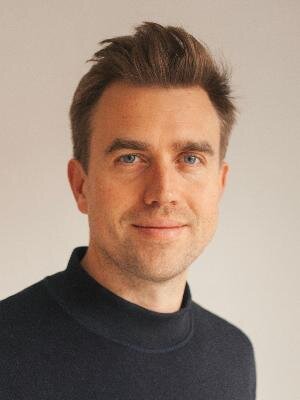
Derek Lomas
- +31634045748
- +31 15 27 81886
- J.D.Lomas@tudelft.nl
- Playpower Labs
-
Room C-3-290
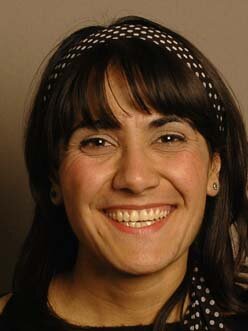
Elif Ozcan Vieira
- +31 (0)15 27 89678
- E.Ozcan@tudelft.nl
-
Room C-3-220
"Product sounds are the voice of a product. When designing a sound, one should therefore first listen to what the product has to say."

Derek Lomas
- +31634045748
- +31 15 27 81886
- J.D.Lomas@tudelft.nl
- Playpower Labs
-
Room C-3-290

Elif Ozcan Vieira
- +31 (0)15 27 89678
- E.Ozcan@tudelft.nl
-
Room C-3-220
"Product sounds are the voice of a product. When designing a sound, one should therefore first listen to what the product has to say."


